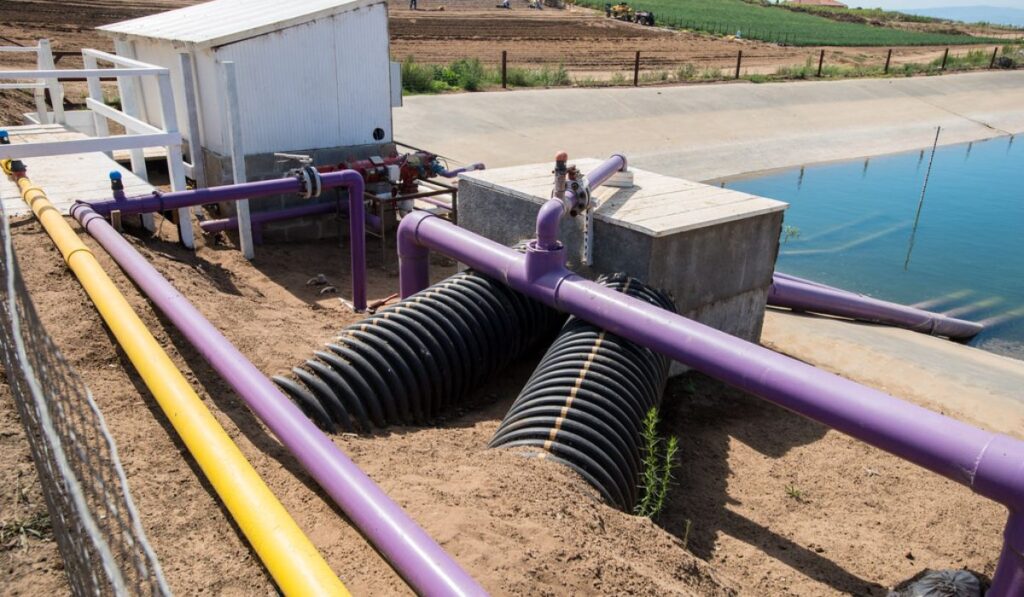Understanding Home Drainage Systems
Gutter Medics presents a detailed guide to managing your home’s drainage needs efficiently. From selecting the right materials to installation tips, our comprehensive guide has you covered. Dive into our FAQs for quick answers, browse through positive reviews from satisfied customers, and explore our service areas to see how we can assist you directly. If you’re ready to ensure your home’s drainage system is in top shape, give us a call at (630) 922-3131 and let’s get started.
Understanding Drainage Trenches
Learn how to correctly measure and dig trenches for your drainage systems, ensuring they are the proper width and depth for optimal water flow and prevention of blockages.
• Proper Sizing And Digging
The success of underground drainage systems starts with correctly sizing the trench. For a standard domestic pipe of 110mm, a trench width of 410mm is required. This extra space is essential for removing obstacles and ensuring the excavated material is suitable for backfilling, provided it’s free of sharp objects.
• Choosing Backfill Materials
The choice of backfill material is critical. While excavated soil can be reused if it’s finely sieved and free of stones, using clay or heavy soils is not advisable due to their compaction properties. Granular materials, like pea shingles, are recommended for their drainage qualities.
Preparing Drainage Pipes
Get insights on cutting, chamfering, and preparing your drainage pipes for installation, including tips on selecting the right tools and materials for a secure fit.
• Cutting And Chamfering Pipes
Preparing your pipes involves accurate cutting and chamfering. This process requires a fine-toothed saw for cutting and a rasp or file for smoothing the edges. Properly prepared pipes ensure a tight fit and prevent damage to the seals during installation.
• Lubrication And Assembly
Applying a silicone lubricant to the joints of the pipes is a crucial step for a smooth assembly. This not only facilitates the fitting process but also enhances the seal, reducing the risk of leaks.
Installing The Drainage Systems
In order to ensure a self-cleaning system that effectively manages water flow and minimizes the risk of clogs, it is important to learn the techniques for laying pipes with the appropriate slope.
• Laying Pipes Correctly
The foundation of an effective drainage system is the correct installation of pipes. A slope of 1 in 40 ensures that water flows efficiently, carrying solids away and preventing blockages. This slope is effective across both metric and imperial measurements, ensuring a self-cleaning effect within the pipes.
• Incorporating Rainwater Solution
Adding a rainwater harvesting system can significantly improve your drainage system’s efficiency. It manages excess water effectively, serving as a sustainable solution to redirect overflow away from the foundation and garden areas.

Finishing The Installation
Find out the best practices for backfilling and compacting soil around your newly installed pipes, plus protective measures to extend the life of your drainage system.
• Backfilling The Trench
After installing the pipes, choosing the right backfill material is crucial. Using granular material not only provides stability but also ensures efficient drainage around the pipes. Mechanical soil compaction is recommended to protect the pipes and ensure longevity.
• Protective Measures
To safeguard the newly laid pipes, placing paving slabs above and below the trench can prevent accidental damage from garden tools or heavy equipment. This additional step is a practical measure to maintain the integrity of your drainage system.
Our guide concludes with a reminder of the importance of well-maintained drainage systems for your home’s health. Gutter Medics is your go-to source for expertise, from answering your most pressing questions to providing services tailored to your area. For further assistance or to schedule a consultation, reach out to us at (630) 922-3131. Protect your home against water damage by taking action today.
Gutter Medics Offers The Services As Follows:
Other Articles We’ve Hand-Picked For You:
Frequently Asked Questions
It’s recommended to clean your gutters at least twice during winter, especially if you live in an area with heavy snowfall. Regular cleaning prevents debris buildup and clogging.
Yes, installing gutter protection systems like leaf guards or gutter covers can minimize the accumulation of debris in your gutters. They help maintain proper functionality and reduce the frequency of manual cleaning.
Inspect your gutters for signs of staining, rotting, or water-related damage. Pay attention to seams, anchors, fascia, siding, and foundation. Address any major repairs or replacements to ensure the integrity of your gutter system.
Yes, it’s essential to check the position of your gutters regularly. Ensure they are properly aligned and have a slight slant for efficient water drainage. Incorrect positioning can lead to water pooling and potential damage.
If ice buildup occurs, you can use heat tape and de-icer to melt the ice and prevent blockage. This helps maintain the structural integrity of your home and prevents water damage.
Downspouts should have a downward slope of at least 10 feet from the foundation to redirect water away from your home. This helps prevent water-related issues near the foundation.
Yes, hiring a professional gutter cleaning service can save you time, effort, and ensure thorough maintenance. Professionals have the expertise and tools to clean and safeguard your gutters effectively.
Gutter guards, such as splash guards and leaf guards, can be beneficial in preventing debris buildup and clogs during winter. They help maintain the functionality of your gutters and reduce the need for frequent cleaning.
Gutter Medics provides services such as gutter cleaning, repair, replacement, and comprehensive roof repairs. They offer expert assistance to ensure your gutters and downspouts remain in optimal condition throughout the winter season.

